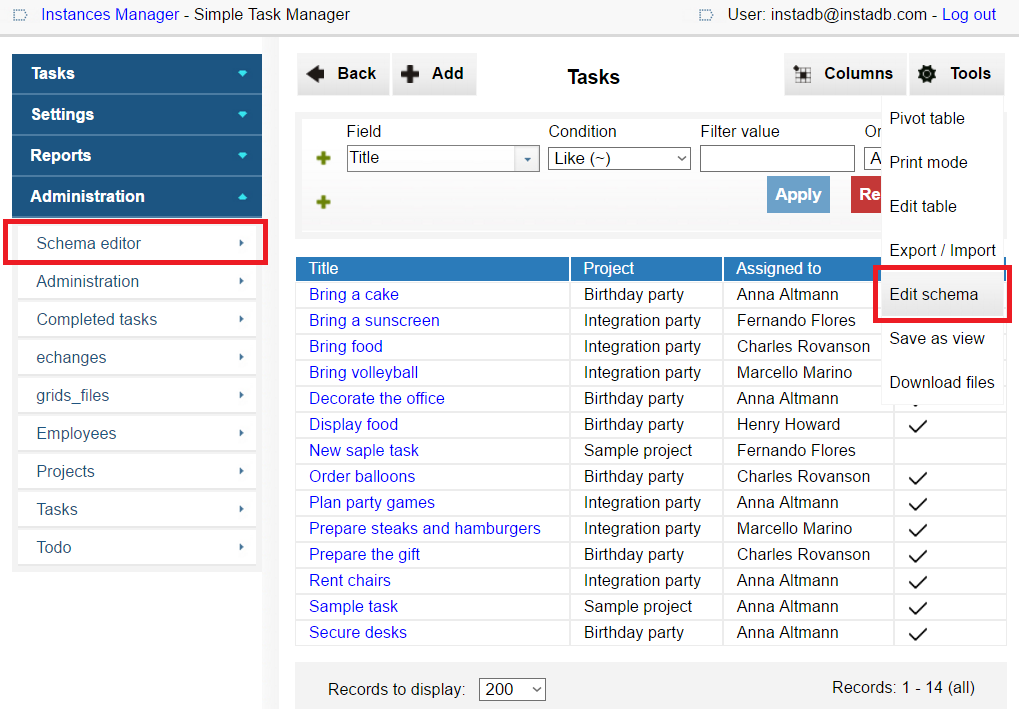Schema Editor explained
Schema Editor is the heart of InstaDB platform. It is where all of the application is created – from the definition of tables and their relations to workflows and permissions.
Below we will explain all the important sections of Schema Editor. If you would rather prefer to watch Schema Editor in action, you may check out the videotutorial.
Where to find Schema Editor?
Schema Editor will always appear at the first position in the automatically created "Administration" menu section on the left side of the screen. This section is available for administrators only, so if you cannot see it, you probably don't have permission to modify the schema of the database.
Another option to start the Schema Editor is to select the "Edit schema" option in the "Tools" menu in the top-right corner of a table or the record view. This option will not take you to the schema root (as the previous option does), but will directly open the section of the schema responsible for the table or the view you are in. Again, this option will not appear if you are not an admin of the database.

The structure of Schema Editor's root
Schema Editor is composed of the following sections:
-
Tables - In this section you can define and modify the tables of the database. The relations between tables are also defined in this place, as the references are just one of the kind of table column.
-
Views - A view is an interface-level modifications of a table. The view can overwrite most of the parameters of a table, like default columns, groups or workflows. This section stores information about all views in the application.
-
Menu - This section is responsible for the menu on the left side of the screen. Access to selected sections and subsections of the menu may depend on user roles.
-
Roles - In this place you can define roles. They can be assigned to users invited to the database. They are used in workflow, rules, and access control.
-
Pivots - All fixed pivot tables (reports) of the database are defined in this section.
-
Custom scripts modules - This section is obsolete and may disappear soon. Do not use it!
-
Access control - The section defines which tables and which columns in them are visible, editable or not accessible at all. Access may depend on the set of user roles.
-
Row access control - This section determines access to particular records of all tables. Access rules may depend on user roles or on SQL expressions.
-
Tutorial, Collate, Convert rules - These are obsolete or experimental sections. Don't use them as they can disappear or be modified without warning!
-
Version - This is the current version of InstaDB metaschema standard. You don't really need to know what it is.
